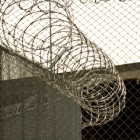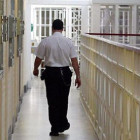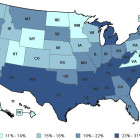
County Police Called to Quell Riot at Georgia YDC
|
Operations have returned to normal at the DeKalb County Regional Youth Detention Center (RYDC) after local law enforcement were called in to secure the facility following a riot this past Sunday. More than half of the 64 juvenile inmates were involved in the disturbance, according to a report by WSB’s Richard Belcher.
This is the second time in less than six months county law enforcement have been called on to regain control of the RYDC. In May, a DeKalb County SWAT unit was called in after what was called a “group disturbance” by then DJJ spokesperson Scheree Moore.
In 2011, at least two similar incidents occurred at Eastman RYDC near Macon, Ga. In February, outside law enforcement from two nearby counties were called in to help regain control and return the 60 inmates involved to their cells.
DJJ officials declined to comment, only saying that the investigation is ongoing, but Atlanta’s WSB TV was able to piece together a timeline of what happened in the facility on the afternoon of Oct. 2 through a combination of police reports and a 911 call from an official working at the time of the riot.
The most recent incident was the largest such disturbance reported to date, involving at least 34 of the 64 youth held at the facility, according to the 911 call.
Also in May, a murder suspect escaped from the DeKalb RYDC. The 16-year-old escapee was apprehended later the same week, but the circumstances surrounding the escape are still unclear.
Citing budgetary constraints the DJJ closed two RYDC facilities last spring, although neither of the closed facilities were near Eastman or DeKalb. Twenty RYDCs remain active throughout the state. In addition there are six long-term Youth Development Campuses in Georgia.








